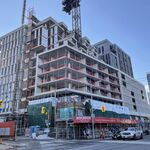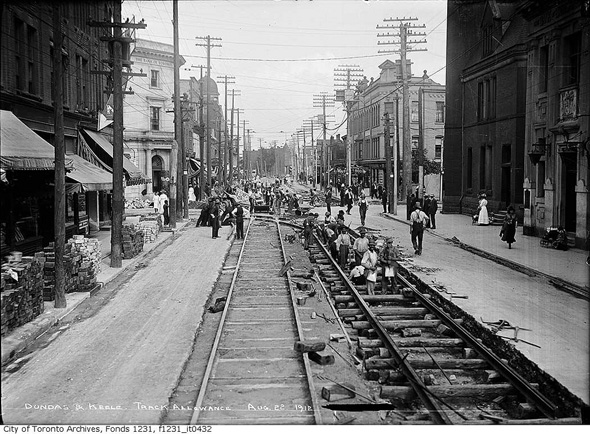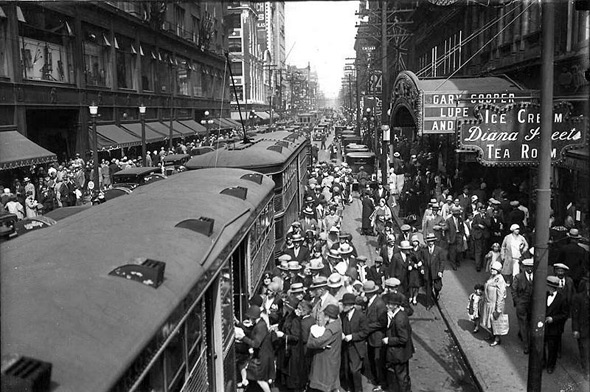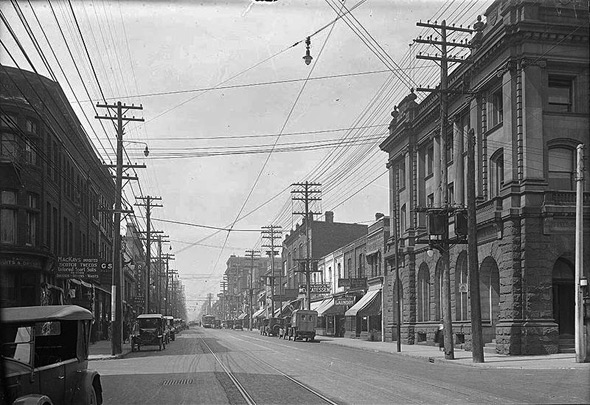"It's not awful" is an objectively awful approach to transit expansion and justification.
Considering Spadina is a streetcar line of similar length and comparable ridership only 800m from a subway line, I'd say it's awful - at the very least, it demonstrates that corridor did not need a subway.
You're right that there are other stations on the network with low ridership - but there isn't a stretch anywhere on the system with ridership that bad. Bayview, Bessarion and Leslie average 5,830 riders a day. That is indeed awful. Rosedale and Summerhill may have bad ridership - but they're also bordered by Yonge to the south (over 204,000 riders) and St. Clair to the north (nearly 35,000 riders). Old Mill may not handle a lot of riders, but Royal York (over 23,000 riders) and Jane (nearly 20,000 riders) each handle more riders than Bayview, Bessarion and Leslie combined.
This is why is makes sense to build subways where they're actually needed.
Do you honestly believe that any of the sections of subway you mentioned outside of Sheppard had the ridership levels you quoted 10, 20, even thirty years after they were built? Some of those sections are over 60 years old. They've had 3 generations of change, new building designs, they've seen the rise, fall, and rise again of the streetcar, the introduction of suburban development, etc. Sheppard is 15 years old. It may seem like a long time, but it's still within the first generation of the line's users. Remember, the Yonge line used to run 2-car G-series trains during the off-peak hours because ridership was fairly low during the first decades of the subway's existence. It may have been packed during rush hours, but I can make the same argument with the Sheppard subway currently, especially for a line half the length of the original Yonge subway.
There's also the important aspect of context. Here in Toronto, subway ridership is huge, our subway cars are huge, and our transit share is huge. We have subway lines that are the most crowded in North America (this means more crowded than NYC's Lexington Avenue line). Our trains are among the largest as well (only NYC has larger trains). Half of New York City's subways have average ridership levels worse than that on Sheppard, especially outside of Manhattan. While it's true that half of those lines are elevated, it doesn't excuse the potential of having grade-separated heavy rail transit in what we'd consider "sparsely populated suburbs". It's true that we don't need nearly the number of lines NYC has because population density in Brooklyn, the bronx, and Queens are on average higher than those in Toronto, but it doesn't excuse the lack of rapid transit lines on Sheppard and Eglinton (with the addition of a Don Mills Relief Line and the SSE, but those are N/S routes). This is only considering NYC. What about every other city in North America? Chicago? Vancouver? Philadelphia? Boston? LA? DC? The Sheppard subway, despite being relatively young compared to half these cities, the Sheppard Subway sees, on average, higher ridership/km and ridership/station rates than any of these cities (and so many more around the world). The point of this is that our perception of what is deemed to be "adequate ridership for a subway" is heavily skewed by our own system. It shows that, sure, maybe we don't have our priorities straight, but it doesn't dismiss the feasibility for a subway on Sheppard, Eglinton, or even further into Scarborough within the next 20 years.
The average daily ridership of the Sheppard subway per station is 9,400 passengers/station, 11,750 if you take out Sheppard Yonge (a forced transfer), and 15,667 if you take bessarion out as well. It shows that maybe Bessarion was a white elephant, fair enough, but it doesn't make a fair enough argument for not having the subway there at all. Bayview sees about 10K passengers/day, Leslie now probably sees even more than that (given all the new condos there that 2016 statistics can't account for). These aren't bad numbers for individual stations, especially stations only served by one bus route. Don Mills sees 32K, which is fairly high. These riderships are only projected to grow with all the new developments on Sheppard.
We also have to remember that Sheppard is a stub, only a 5 km stand-alone line that merely acts as an extension of the Yonge line. If you put a 5km line downtown, you won't see that much better ridership than on Sheppard -- the streetcars are proof of this. Spadina likes to be quoted, but for a 6.1 km line, it sees fewer riders than the Sheppard Subway. While Sheppard as a stand-alone line would theoretically do worse than the existing Sheppard subway, it can be argued that Line 4 currently operates as a stand-alone line given the fact that there are no reasons to use it unless you live along it. In other words, it only serves the people living around it, not everyone else traveling to the corridor (unlike downtown). People from downtown always argue that subways need to be built downtown to serve people living downtown because the existing system is crowded. While this is true for 3 corridors -- King, Yonge, and University -- it is not true for every other corridor downtown. Subways need to be built downtown to serve the people commuting to downtown. One may argue that such a statement is ludicrous, but one has to remember that downtown is dense, and is therefore walkable. It's easy to get around downtown just by walking for 10 minutes. Many don't even bother with transit downtown, walking (and now cycling) are becoming the dominant modes of getting around downtown. Why?
1. It's free.
2. It's usually faster than taking a streetcar (We've all had the dreadful waits where it's faster to walk to your destination than wait the 5 minutes for a streetcar, then use it while it's crawling slower than a snail)
3. It's sometimes faster than taking the subway (It takes about 4 minutes to get from street level to platform, plus waiting 2 minutes for a train, riding for 4-6 minutes, then another 2-3 minutes to get back to the surface, making a trip between 12 and 15 minutes just to from one place in downtown to another, whether it's half a kilometer or 2 km away. This doesn't even include getting to the station. In most cases, it's simply faster to walk or bike).
4. It's healthier (air quality in subways, stress of riding the TTC, exercise)
5. It's convenient
The point I'm trying to make here is that while you claim that subways "should be built where they're actually needed", you forget who the subway lines actually serve -- downtown commuters, and people trying to get to far areas of the city. These types of trips aren't possible downtown because downtown is so small. Downtown subway lines are crowded because they are being used by people traveling TO downtown, not necessarily around downtown. You also forget that subways aren't meant to be built to be full on day one, no transit is. Subways are built to serve the needs of commuters now, and the future needs of commuters, regardless of who they are and where they're going. That's why the Bloor Danforth line isn't over-capacity yet. It was built to serve the needs of the 40, 50, 60+ years into the future, not just the overcrowding issues of the present day (back then). This is why I get annoyed when politicians claim LRT will solve everything. No, it will not. It may solve the problem for 10-2o, maybe even 30 years, but within that timeframe, we'll be back where we started, and we'll have to go through the same political mess that involved fixing the problem that could have been solved if we had built for the future. Right now, we have a backlog of expansion, which is why the DRL needs to be built before any suburban expansion. The problem arises with claiming that all suburban rapid transit expansion isn't justified. It's backwards to claim that we should only build for the here and now when that leads to the problem in the first place.
Again, I am not an opponent of LRT. I really like the technology, however, it has its purpose. Toronto Transit is built up on the idea of shuttling people to subway trunk routes, and using the high-speed subway to get around the city. LRT is a technology in the middle of the shuttle and trunk route system -- it's there to shuttle local people from surrounding areas down a main corridor to a destination, or to a subway trunk line. This technology fits perfectly for corridors like York Mills, Lawrence, Dufferin, Jane, Finch, Steeles. These are corridors with high levels of traffic, with lots of local traffic (meaning they aren't influenced by much ridership from other bus routes (with the exception of Finch)), but also a lot of long distance traffic either trying to transfer to the subway, or go further down the corridor. This is different from corridors like Bloor, Danforth, Yonge, Eglinton, Sheppard, Don Mills, and McCowan. These corridors serve as main corridors that funnel passengers down one direction. You don't see much local traffic on Eglinton or Sheppard, - almost everyone is heading for their connections on Line 1 or Line 2.












